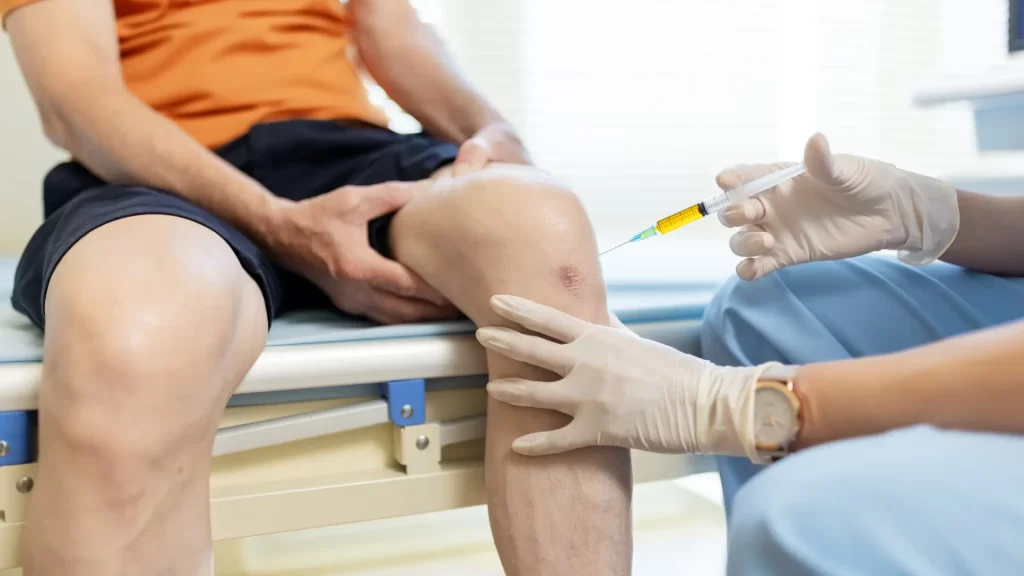
Knee pain is a common health issue that affects people of all ages. It can result from an injury, wear and tear, or a medical condition. Knee pain can make it difficult to walk, climb stairs, or do daily tasks. Some people may feel a dull ache, while others may knee pain and treatment sharp pain. Treatment for knee pain depends on the cause, the severity of the pain, and the overall health of the patient.
This article will explain the reasons behind knee pain and the various treatments available. Everything is written in simple words to help you understand easily.
What is Knee Pain?
Knee pain is discomfort or soreness in or around the knee joint. It can affect the front, back, sides, or inside of the knee. The pain may come and go, or it can be constant. Some people feel pain only when moving the knee, while others may feel pain even when resting.
Common Causes of Knee Pain
There are many reasons a person may suffer from knee pain. Some of the most common causes include:
1. Injuries:
Injuries such as sprains, strains, and tears in the muscles or ligaments around the knee can lead to pain. Accidents, falls, or sudden movements are often the reason.
2. Arthritis:
Arthritis is a condition that causes swelling and pain in the joints. The most common type in the knee is osteoarthritis. It usually affects older people, but younger adults may also develop it.
3. Overuse:
Repeating the same movement again and again can cause knee pain. This is common in athletes, runners, and people with physically demanding jobs.
4. Weight:
Being overweight puts extra pressure on the knees. Over time, this can cause damage and pain.
5. Weak Muscles or Imbalance:
If the muscles around the knee are not strong enough, it can cause pain. Muscle imbalance can also lead to joint stress.
6. Infections or Diseases:
Sometimes, infections or medical conditions like gout or bursitis can lead to knee pain.
Symptoms of Knee Pain
Some signs of knee pain include:
-
Swelling or stiffness
-
Redness and warmth
-
Weakness or instability
-
Clicking or popping sounds
-
Trouble bending or straightening the knee
If you feel severe pain, or if the knee looks deformed or cannot bear weight, it is important to seek help from a doctor.
Diagnosis of Knee Pain
To find the exact cause of knee pain, a doctor will usually ask about your medical history and perform a physical exam. Some common tests used for diagnosis include:
-
X-ray: To see the bones
-
MRI or CT scan: To check soft tissues like ligaments or cartilage
-
Blood tests: To rule out infections or diseases
-
Joint fluid test: To detect problems like gout
Treatment for Knee Pain
There are many ways to treat knee pain. The best option depends on the reason behind the pain. Below are the common treatment methods:
1. Rest and Ice:
For minor injuries, resting the knee and applying ice can help reduce pain and swelling.
2. Medication:
Doctors may give pain-relief medicines or anti-inflammatory drugs to control swelling and discomfort.
3. Physical Therapy:
Exercise helps to strengthen the muscles around the knee. A physical therapist can teach safe and effective workouts.
4. Supportive Devices:
Braces or knee supports can help keep the joint stable and reduce stress.
5. Injections:
In some cases, doctors inject steroids or lubricants into the knee to ease pain and improve movement.
6. Surgery:
When other treatments do not work, surgery may be needed. Common surgeries include:
-
Arthroscopy: A small camera is used to find and treat the issue
-
Partial or total knee replacement: Damaged parts of the knee are replaced with artificial ones
Home Remedies and Lifestyle Tips
Some people may find relief from knee pain with simple home remedies. These include:
-
Using hot or cold compress
-
Gentle stretching exercises
-
Losing weight to reduce pressure on the knee
-
Avoiding high-impact activities
-
Using soft shoes with proper support
Healthy habits like a balanced diet and regular exercise also help maintain strong joints.
Prevention of Knee Pain
Preventing knee pain is possible by taking care of your joints and body. Here are a few ways to prevent it:
-
Warm up before physical activity
-
Use proper techniques during exercise or sports
-
Wear the right footwear
-
Strengthen your leg muscles
-
Keep a healthy body weight
Pay attention to body signals. If something hurts, take a break or change your routine.
When to See a Doctor
It is important to visit a doctor if:
-
Pain does not go away in a few days
-
There is heavy swelling
-
The knee cannot move normally
-
You cannot put weight on the leg
-
You notice signs of infection like redness, heat, or fever
Early treatment can prevent long-term damage and help you recover faster.
Conclusion
Knee pain can affect anyone and can be caused by many different factors. Understanding the cause is the first step toward treatment. Whether it is due to an injury, aging, or a medical condition, proper care and the right treatment can bring relief. If you suffer from long-term knee pain, do not ignore it. Seeking timely help can protect your joint health and improve your quality of life.
For expert advice and reliable treatment for knee pain, Hash Clinics offers quality care and trusted support.
Comments on “Understanding Knee Pain and Treatment Options in Simple Words”